Recently Digitised Material: October-December 2021
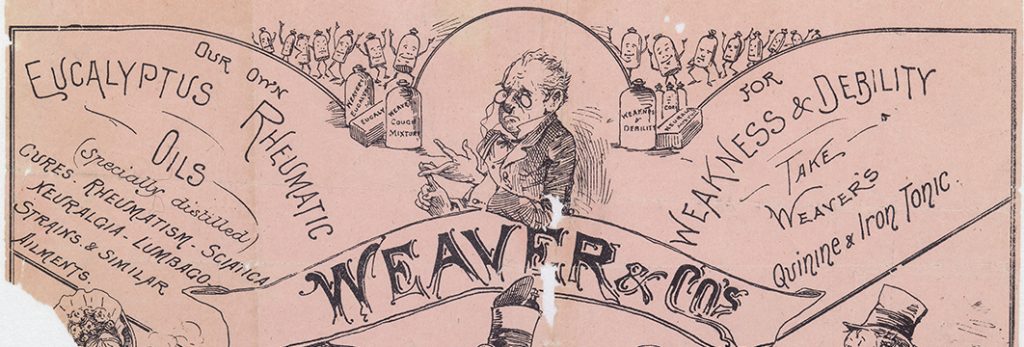
This blog features some of the recently digitised items from the Tasmanian Archives and the State Library of Tasmania.
Read on to find out more about our new additions to our digital collections! To discover even more, you can also search our catalogue and Tasmanian Names Index or visit us on Flickr, YouTube and Instagram.
In this blog:
- Photographs of Tasmanian Cricket Teams – Ref: PH40/1/3625-27
- Photographs of Launceston and Perth– Ref: NS7193/1/5-8
- Artwork of Launceston Mechanics Institute – Ref: LPIC41/1/1
- Artwork of Hobart Town, on the River Derwent, Van Diemen’s Land by W.J. Huggins (Allport)
- Photograph of Twin Ferry Kangaroo, Hobart – Ref: PH30/1/3269
- Advertisement for Weaver and Co, Wellington Bridge Hobart by T Midwood – Ref: NS6760/1/7
- Glass Plate Negatives by A Rollings of Sorell Area – Ref: NS1553/1/1010-1099
- Register of Convicts B, M-Z 1835-47 – Ref: CON22/1/4
- Register of payment of salaries to officers of the police, 1855-57 – Ref: AUD45/1/1-3
- Journal of a voyage from Liverpool to VDL, 1833 – Ref: NS5739/1/1
- Copies of Wills Recording Granting of Probate – Ref: AD960/1/6, AD960/1/7
- Film of opening of Launceston library after refit – Ref: AG279/1/2
- Film of the Launceston children’s library – Ref: AG279/1/1
Images
Launceston Mechanics Institute / Ink and watercolour – Ref: LPIC41/1/1
The Launceston Mechanics Institute was built to promote science, the arts and general literature particularly amongst working men. Public lectures were given for educational purposes. Early premises were too small and new premises were opened on 9 April 1860 on the corner of Cameron and St John’s streets. In 1930, the Launceston Mechanics Institute became known as the Launceston Public Library. In 1971, the Launceston Mechanics Institute’s three-storey stone building was demolished after the construction of a new library nearby. See the Films section of this blog for some vision of the later Launceston Library.
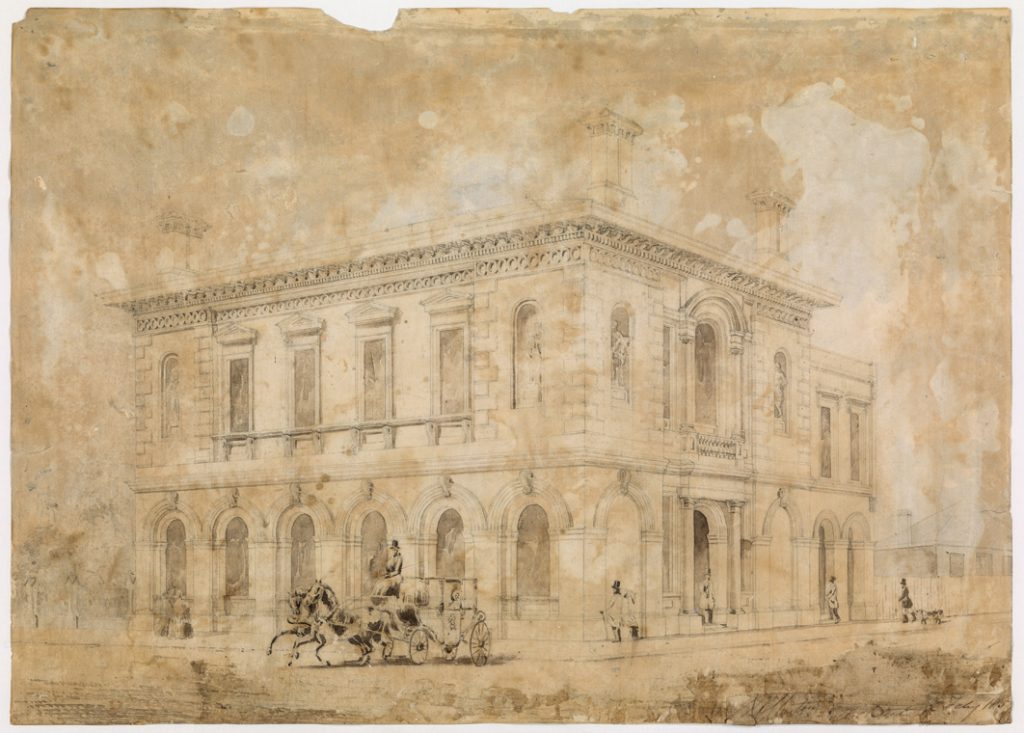
Hobart Town, on the River Derwent, Van Diemen’s Land / painted by W.J. Huggins (Allport Library and Museum of Fine Arts)
This grand view of Hobart, printed in 1830, was painted by William John Huggins. Huggins worked as a sailor for the East India company, creating drawings of the landscapes and ships along the way. He later settled in London as a painter and printmaker, and became marine painter to William IV in 1830.
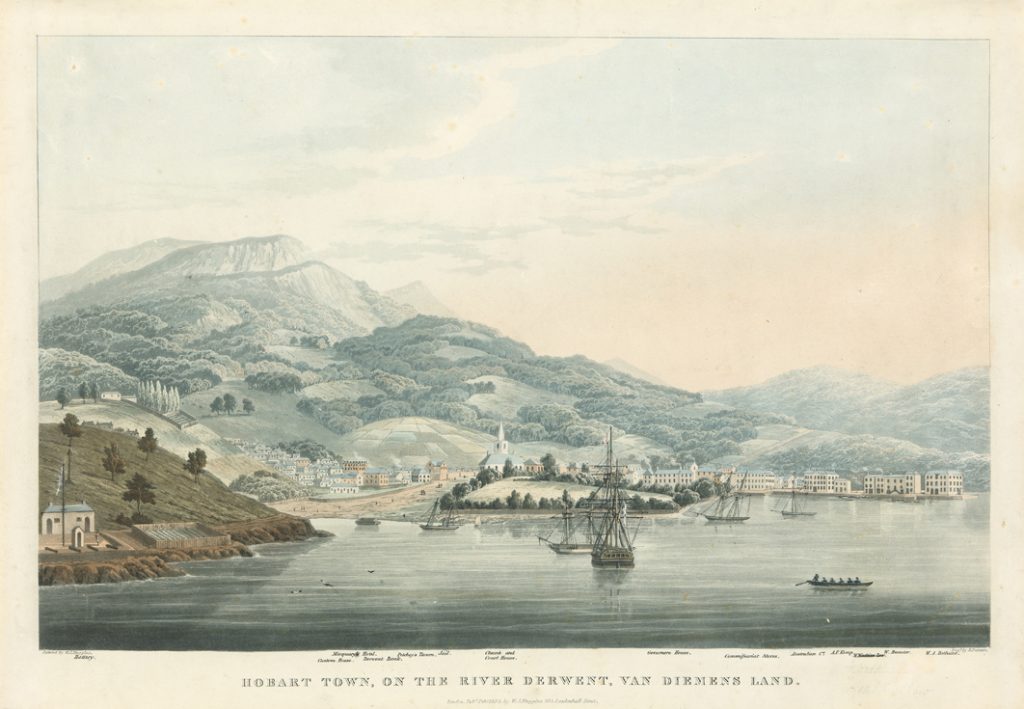
Twin Ferry Kangaroo showing horse and carriages on the deck, Hobart – Ref: PH30/1/3269 (Tasmanian Archives)
The Kangaroo was a twin hull paddle steamer built by Captain Goldsmith at the Domain shipyards. It started running the Kangaroo Point ferry service in 1855, and operated on this route for 70 years. Its twin hull earned it the nickname ‘old double guts’. Ref: Ferries of the Derwent : a history of the ferry services on the Derwent River / by D.G. O’May
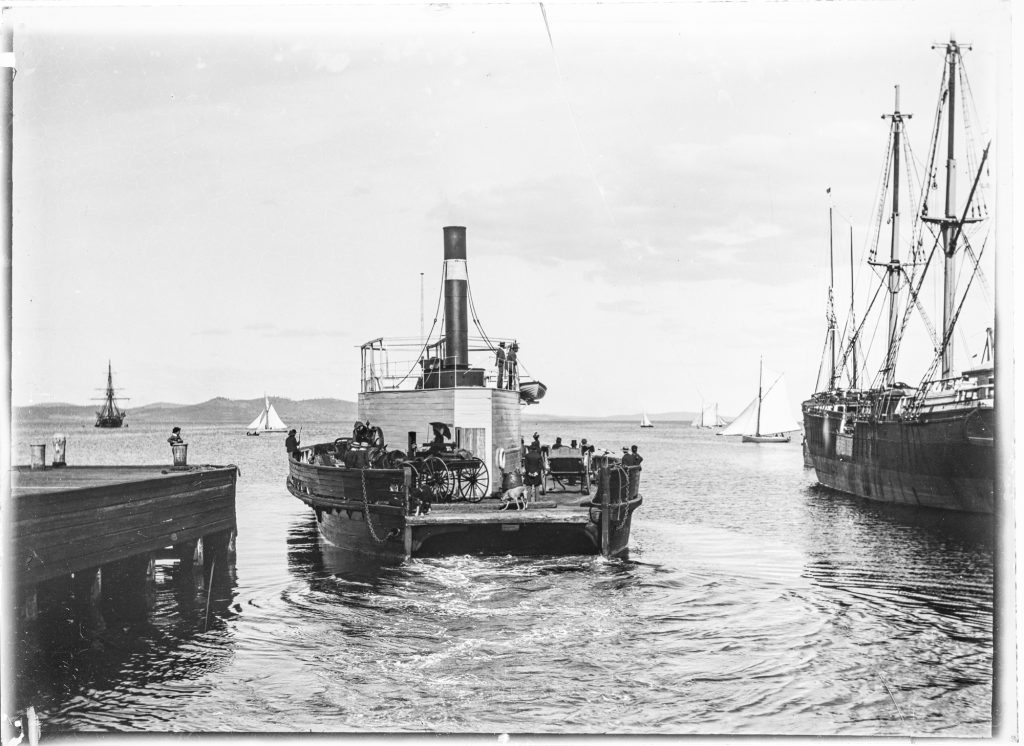
Thomas Midwood Advertisement for Weaver and Co, Wellington Bridge Hobart – Ref: NS6760/1/7 (Tasmanian Archives)
For details about Thomas Midwood and his career as a cartoonist and draughtsman, see our previous blog. Weaver and Co’s was a pharmacy at Wellington Bridge, which can now be found as a small opening onto the rivulet within Elizabeth Street Mall, near the entrance to the Wellington Walk arcade.

Glass Plate Negatives by A Rollings of Sorell Area – Ref: NS1553/1/1010-1099
AA “Arch” Rollings was born in Sorell (Forcett) to farmers James Rollings and Martha Wiggins in 1865. He married Sophia Dodge (1848-1928) in Hobart in 1890. After Sophia died, he married Julia Adelaide Rapp (1872-1959). He is not recorded as having any children. Arch was appointed post-master and savings bank agent at Forcett in 1896. He is also noted as playing in the Forcett Football Club and later in the Carnarvon Team. By 1898 Rollings had moved to professional photography. With Harry Dart he operated a studio in Harrington Street ‘Dart and Rollings’. In the early 1900s until 1906 he had a partnership with H E Howard. In 1906 Rollings opened a drapery and photographic business in Sorell. He was in business until 1924 at his shop at 21 Gordon Street. The most well known photographs taken by A A Rollings are those of Horace Watson recording the voice of Fanny Cochrane Smith in 1903. Photographs taken by Arch Rollings can be found in series where he is listed as the creator, as well as in general miscellaneous photographic series including PH30 and PH40.
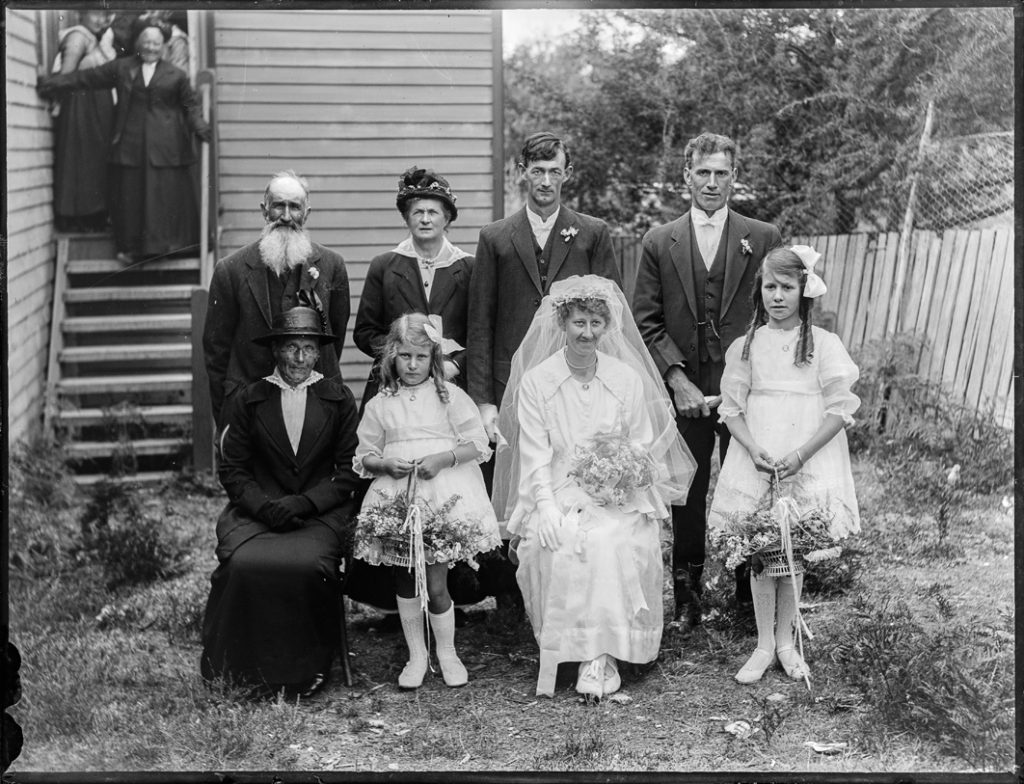
Photographs of Tasmanian Cricket Teams – Ref: PH40/1/3625-27
Including the Tasmanian Cricket Team – Tasmania v England at Launceston February 1925, North v South in Launceston Easter 1920, and New Town District Cricket Club ‘B’ Grade Premiers 1927-28.
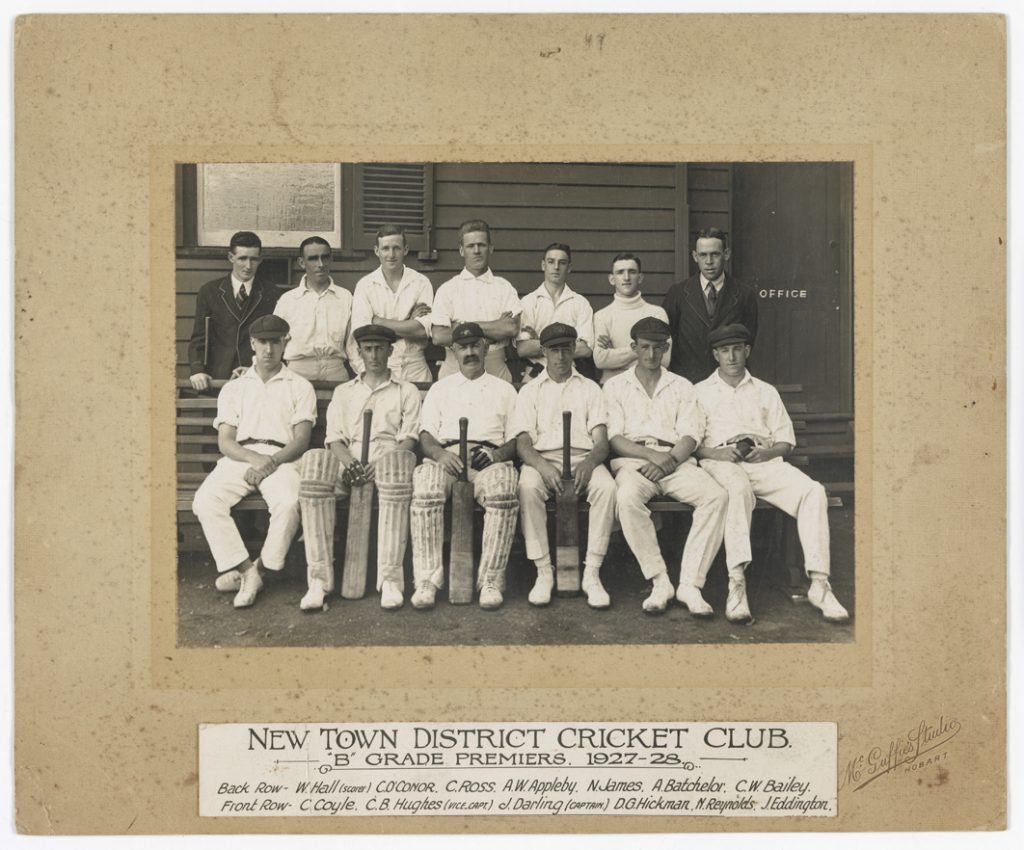
Photographs of Launceston and Perth – Ref: NS7193/1/5-8
We have digitised seven photographs showing Launceston during the massive floods of 1929. These are from a series of photographs of, and collected by, the Blazely, Bean, Burk, and Chamley families.
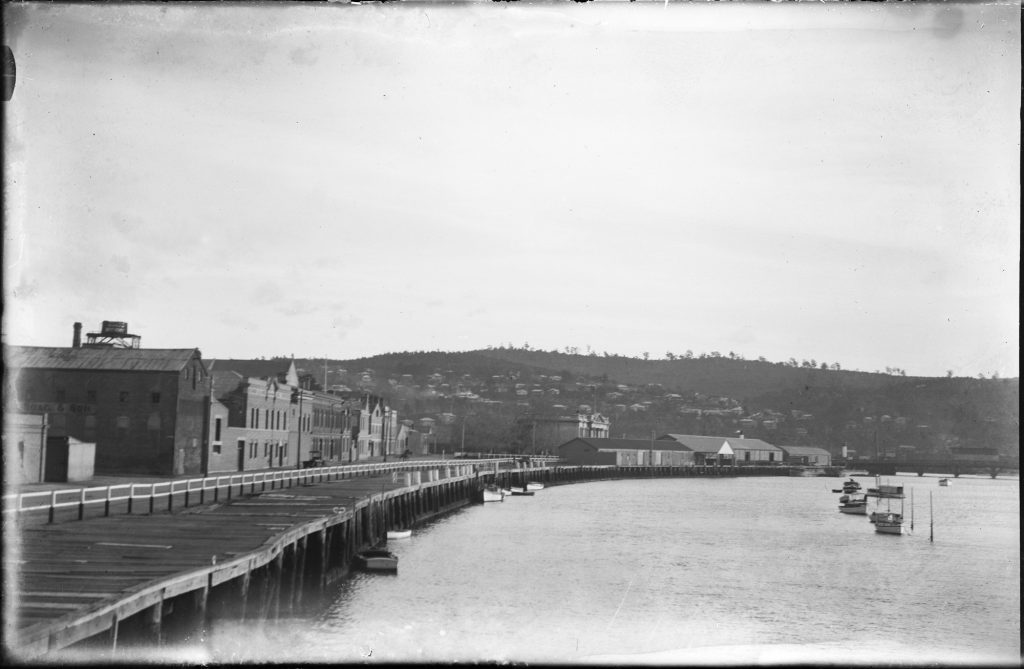
Registers and Journals
Register of the payment of salaries to officers of the police, 1855-57 – Ref: AUD45/1/1-3 (Tasmanian Archives)
Comprehensive listings of all police (including water police), prison staff, medical officers, gaol allowances. Information given includes name of officer, position, rate of pay per annum, amounts paid each month and remarks column.
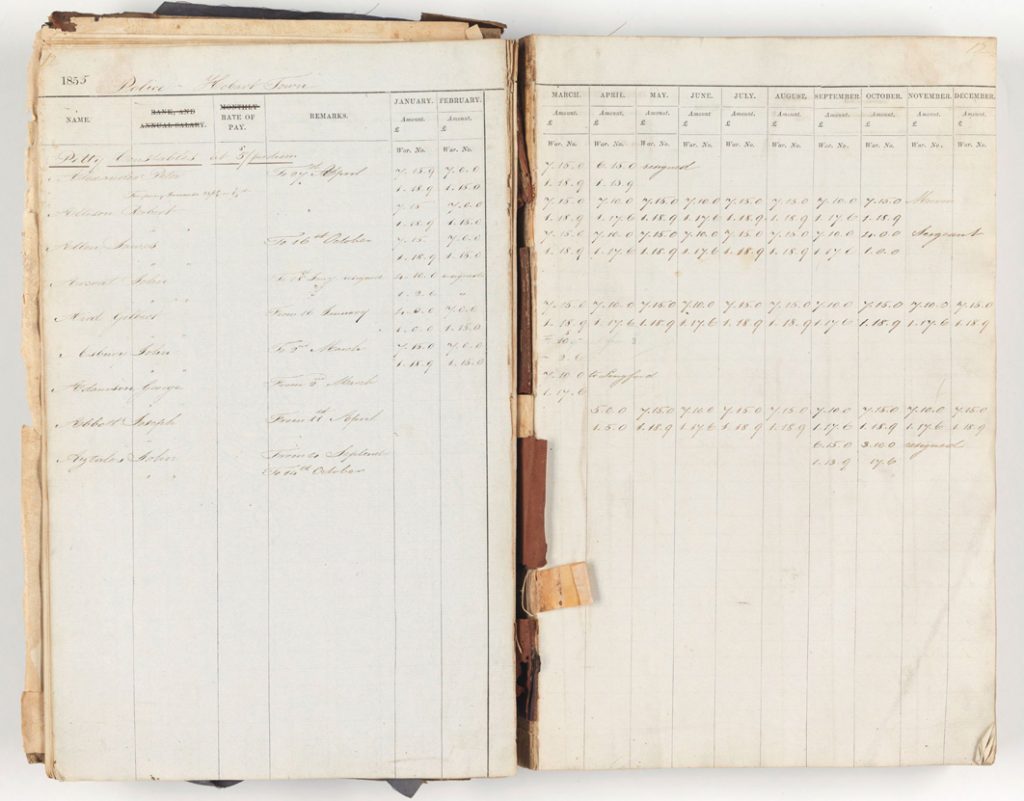
Journal of a voyage from Liverpool to VDL in the ship Cabotia, 1833 – Ref: NS5739/1/1
This was the travel journal of Dr Edward Swarbreck Hall, who was a Surgeon, public health reformer and a member of the Royal Society of Tasmania. Dr E.S. Hall (1804 -1881) arrived in Hobart in 1833, accompanied by his wife Mary Hall (nee Latham). He ran a Medical School at the General Hospital, Hobart, during the early 1850s, and also delivered public lectures at the Mechanics Institute. In 1861 he was appointed Chairman of the Executive Committee of the new Benevolent Society where he campaigned for deserted families, poor nursing mothers and orphan children. He was also a prominent Catholic layman and helped to build many churches. His last public office was the dispersal of charitable aid in March 1880. He and Mary had ten children, four of whom died in infancy. The surviving daughters were Mary Jane (who, as Sister Mary Agnes, became a Sister of Charity at St. Joseph’s Convent in Hobart), Victoria, Anne, Anastasia (who kept a library in Collins Street, Hobart), and Josephine. Their son, Leventhorpe Michael Hall was a draughtsman in the Lands and Survey Department. None of the surviving Hall children married. A transcription of this diary can also be found in the book, ‘Dr Edward Swarbreck Hall: colonial medical scientist and moral activist,’ by Carey Denholm and Stefan Petrow, Australian Scholarly Publishing, 2016.
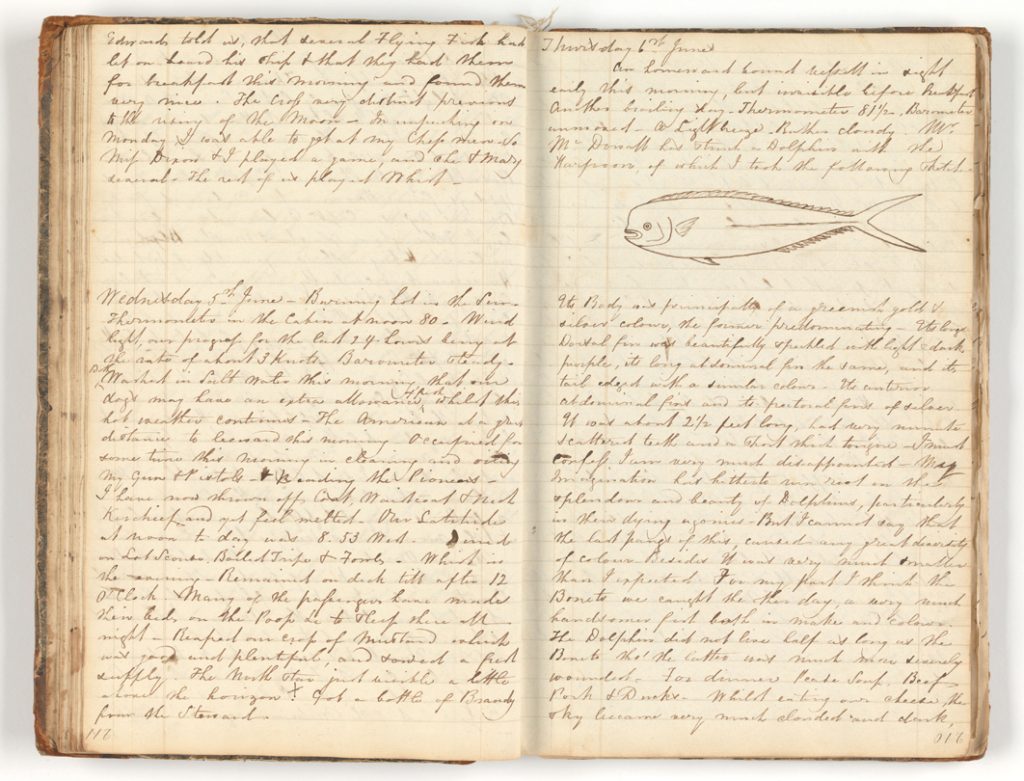
Register of Convicts B, M-Z 1835-47 – Ref: CON22/1/4 (Tasmanian Archives)
This volume is part of a series of comprehensive lists of convicts compiled by the convict department, and from which our original index of convicts was compiled. The register gives each convict ship a number, in order of their arrivals, and is organised by the ship’s arrival and the first letter of the convict’s surname. It also documents the year of arrival, ship name, place and date of sentencing, duration of sentence and notes for when they achieved a level of freedom, or died under sentence.
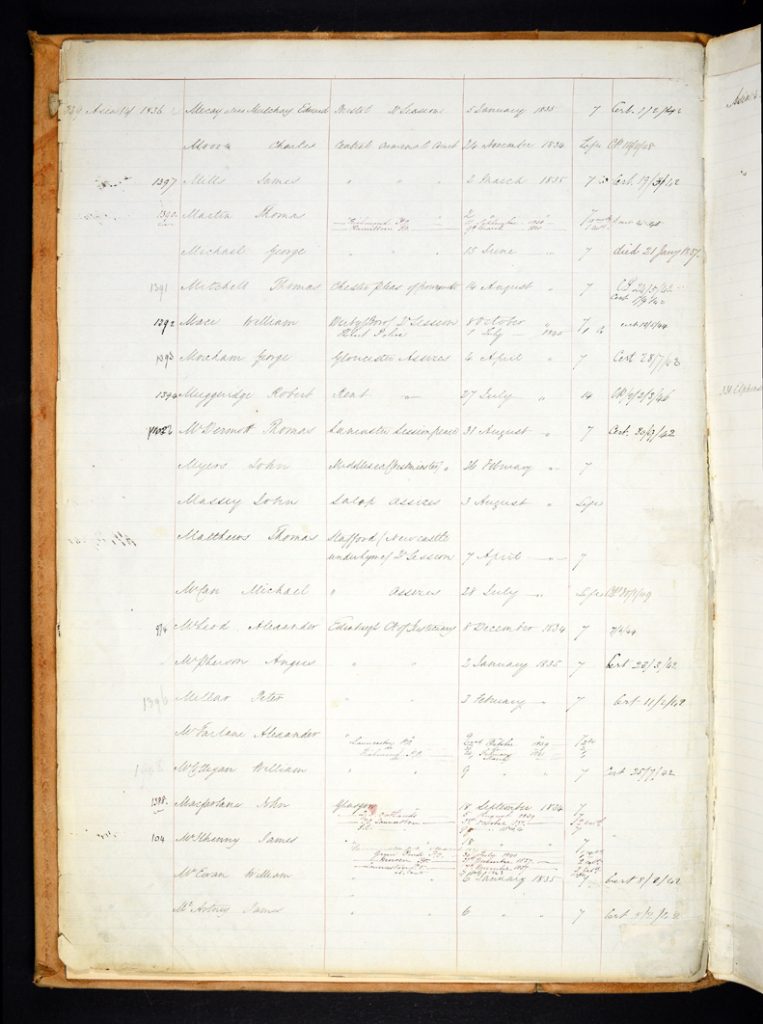
Wills Image Replacement Project
Access to our early wills dating from 1828 will see a new lease of life with pages from the early volumes of the AD960 series being replaced with higher quality images. Wills from AD960/1/6 and AD960/1/7 are now available to view online via the Tasmanian Names Index.
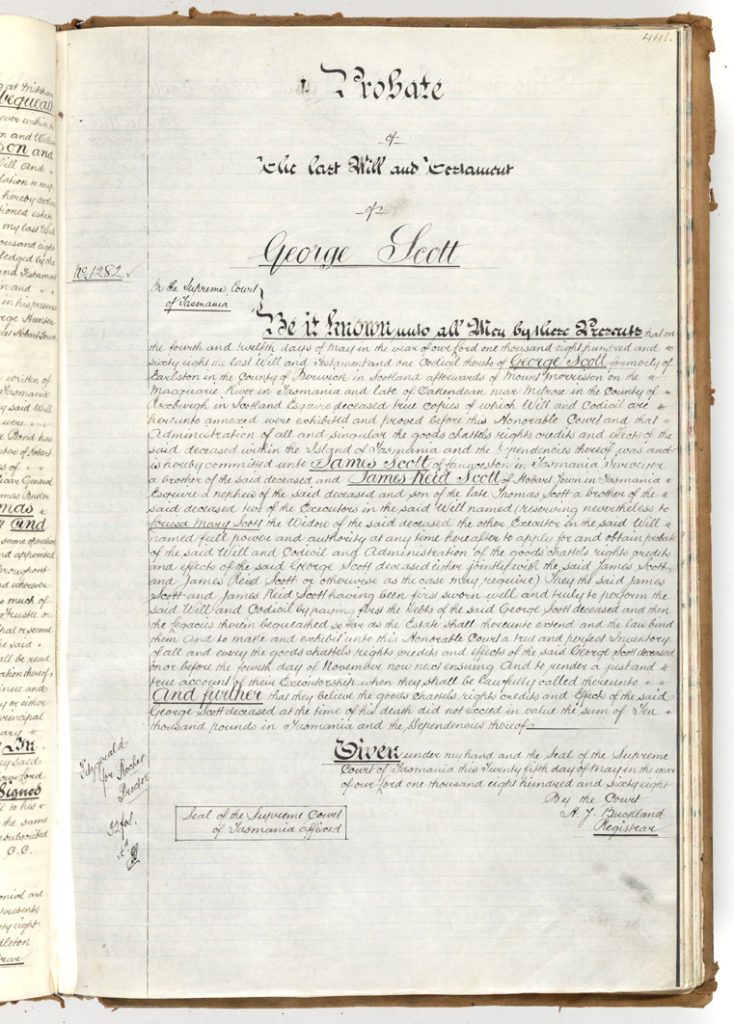
Films
Opening of Launceston library after refit – Ref: AG279/1/2 (Tasmanian Archives)
This video is a delightful time capsule that shows off the renovations completed at the Launceston Library in 1971. Staff in early 70’s librarian chic go about the business of readying the library to be opened to the public. A view out the window onto Launceston Town Hall and the Centenary clock, before the street became Civic Square.
The Launceston children’s library when Mrs Paterson was in charge – Ref: AG279/1/1 (Tasmanian Archives)
Go back further into Launceston Library’s history with this video of the Launceston children’s library, in which we can see the friendly librarian, Mrs Paterson, helping children select and check out books.
A note about permissions
We love it when people use our resources. If you’d like to use our images or films in your book, manuscript, documentary, blog, or social media, please do make sure that you ask permission first. You can find out how to do this on our Writers and Publishers page (which has a link to the permission form).
Please feel free to ring us for advice or help. You can find our telephone numbers and chat service on our Help Desk.

